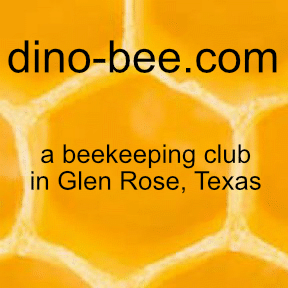Honey Bees and Flower Constancy
/
(NOTE: This article appeared in the July/August 2020 edition of the Texas Beekeepers Association Journal}
A little over 2,000 years ago, the Greek philosopher Aristotle got it right when he wrote, “On each expedition the bee does not fly from a flower of one kind to a flower of another, but flies from one violet say to another violet and never meddles with another flower until it has got back to the hive.” Today biologists call this behavior Flower Constancy or Pollinator Constancy and it’s a boon to honey bees and flowers alike.
FLOWER CONSTANCY
Flower Constancy is a behavior demonstrated by insect pollinators when they limit a foraging trip to flowers of a certain species even when it means bypassing more nutritionally valuable targets. This serves the plant specie because it gets reproduction done without messy cross-pollination. But that’s only part of story.
Honey Bee on a White Clover Blossom
Flower Constancy comes in three flavors. Oligolectic (Fixed Constancy) pollinators only visit flowers of a limited number of species. Monolectic (a narrow form of Fixed Constancy) is even more limited since these pollinators forage only on a single floral species. Honeybees are different; they are Polylectic (Individual Constancy) pollinators. Here’s why
Honey bees can’t afford a single-flower diet for one reason; a honey bee colony is perennial. Spring, summer, and fall, colony survival depends on foragers gathering nourishment from a medley of seasonal flowers and trees. But, as Aristotle observed, an individual honey bee will only visit one type of flower during a single foraging lap. But, she may visit a different type flower on subsequent flights. By necessity her preferences must change with circumstance and the seasons.
FLOWER CONSTANCY AND TRAP LINE FORAGING
Honeybee optimized forage route
Flower Constancy for honey bees does not mean foraging trips are simple out-and-back affairs. It has long been known that bumblebees and other pollinators may visit several destinations during a single foraging flight. These pollinators will establish a route for visiting locations along their foraging trap line. They are able to bring their payload home to the nest, and then return to their trap line route on the next foraging flight.
Research by Alexis Baritois and Mathieu Lihoreau shows honey bees, like their cousins, are also capable of multi-stop “trap lines” on a single foraging flight. Over time the sequence of trap line visits may change as the forager learns the most efficient route to multiple locations (See Figure 1). As a route becomes established, researchers also noted the foraging honey bee makes fewer visits to empty flowers. Routes and route learning will become more stable and efficient with longer distances.
THEORIES OF WHY
Aristotle may have known about Flower Constancy but he never knew the reason. Lately scientists have been working on the “Why”. Early theories pointed to the honey bees’ small brain. Selective Attention theories proposed honey bees can only focus on one search image or floral color scheme at time.
Turns out the honey bee brain is more powerful than people thought, and ‘efficiency’ may be the key to Flower Constancy. The study by Bustois and Lihoreau found honey bee flower constancy increased significantly with greater rewards (as measured by nectar volume, sucrose concentration, and number of available blossoms). A Bigger payload meant more visits.
I’m no scientist but my money is on the ‘efficiency’ angle, not limited honey bee brainpower theory. Beekeepers know honey bees aren’t dumb, and that they are the most productive creatures on the planet. And there is one more thing. Honey bees always surprise us by knowing more than we humans think they know.
References
“Flower constancy in insect pollinators”. Christoph Gruter and Francis L. Ratneiks. Communicative and Integrated Biology. 2011 November 1; 4(6): 633-636.https://www.ncbi.nlm.nih.gov/pmc/articles/PMC3306322
“Flower constancy in honey bee workers (Apis mellifera) depends on ecologically realistic rewards”. Gruter, Moore, Frimin, Helanter, Ratnieks. Journal of Experimental Biology. 2011 214:1397-1402; doi: 10.1242/jeb.050583. https://jeb.biologists.org/content/214/8/1397
“Evidence of trapline foraging in honey bees”. Alexis Buatois and Mathieu Lihoreau. Journal of Experimental Biology. 2016 219;2426-2429; doi: 101242/jeb.143214.https://jeb.biologists.org/content/219/16/2426





